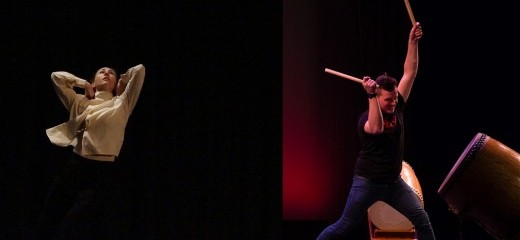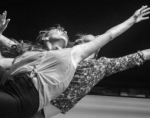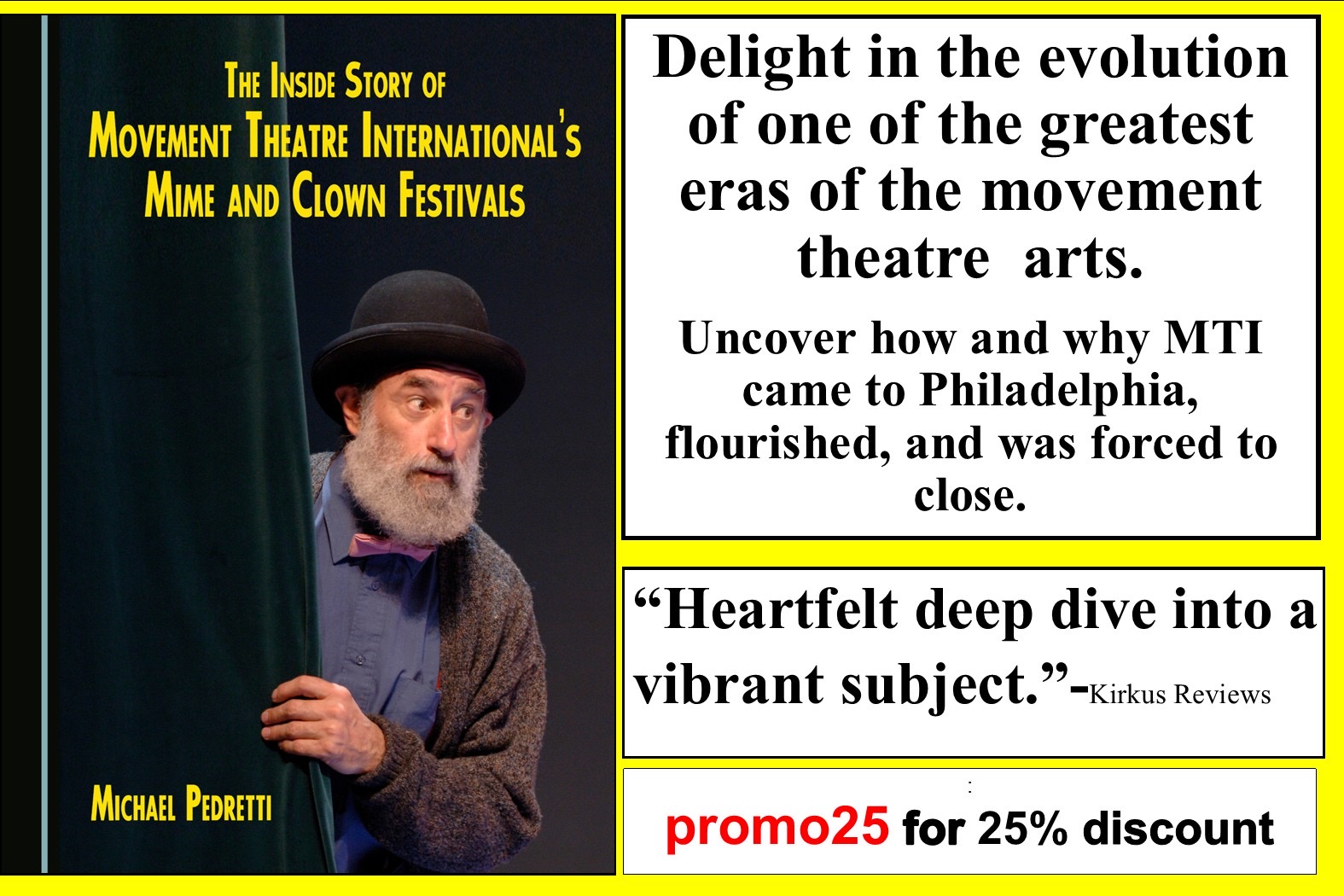
Longing for Two Art Forms to Touch
by Maddie Hopfield
I associate the sound of taiko drumming with my childhood. In my elementary years, I played in my school’s taiko group, and each summer (sans global pandemic), I return to my old temple’s Obon festival in Southern California to guest drum for traditional Bon Odori dances. Seeing the name of the Japanese percussive form listed in this year’s Fringe Festival lineup, I am excited to receive Casual Fifth’s offerings of both contemporary dance and taiko pieces together in a single online show.
The film opens onto a serene wooded clearing with stone steps. Three taiko drums sit on the ground, awaiting their players: Mac Evans, Joe Small, and Alex Pfister. Pfister crouches on the ground, pounding out a subtle but steady beat, as the other two players walk toward their drums. I’m entranced by the simple rhythm, the quietly falling leaves, and the clear pathways Evans and Small make as they make their way towards the instruments. Is this motion, itself, the dance?
As they begin to play together, the song maintains an identity of playfulness as it ricochets between each member of the ensemble, creating bouncy rhythmic pockets. In an impressive display of glute strength, the players shift from side to side in deep squats as their bachi (drumsticks) fall onto the drums in perfect unison. A program note explains that this movement is meant to be reminiscent of fishermen pulling in nets. Is this lateral shifting, from side to side, from past to present, the dance?
The song ends and the next section of the film begins, as Jim May dances a solo on an outdoor path, surrounded by greenery. To my surprise, the musical accompaniment is not taiko, but a pre-recorded classical piano song. Oh, this is the dance. The Dance-dance. May’s expertise as a long-time performer is evident as he moves through the mostly contemporary-style movement with grace. I can see the outline of the veins along his arms and neck, small muscle quivers as he finds his balance through each motion with patience. Despite May’s compelling performance, I still find myself waiting for it: when do the taiko and the dance come together?
The moment never arrives. After May’s solo, Pfister returns again, this time explicitly as a dancer, to perform a solo choreographed by May, shot in the gazebo at FDR park. The audio is once again piano music. The film then concludes with an exciting ensemble drum piece performed by Evans, Small, and Pfister, with the addition of drummer Yoko Nakahashi.
I am impressed by the drumming and dancing skills of the performers throughout the work, but left wondering why the creators of the film chose to keep each art form essentially separate, one only hinting at the other through juxtaposition. While I’ll admit that art centered primarily around cultural “fusion” can often be cringeworthy, I am curious about what led these makers to put contemporary dance and taiko drumming together in the first place. Why be in the same room if you’re not allowed to touch?
Taiko and Dance, Casual Fifth, 2020 Fringe Festival; Vimeo, September 10-October 4.
By Maddie Hopfield
September 29, 2020









